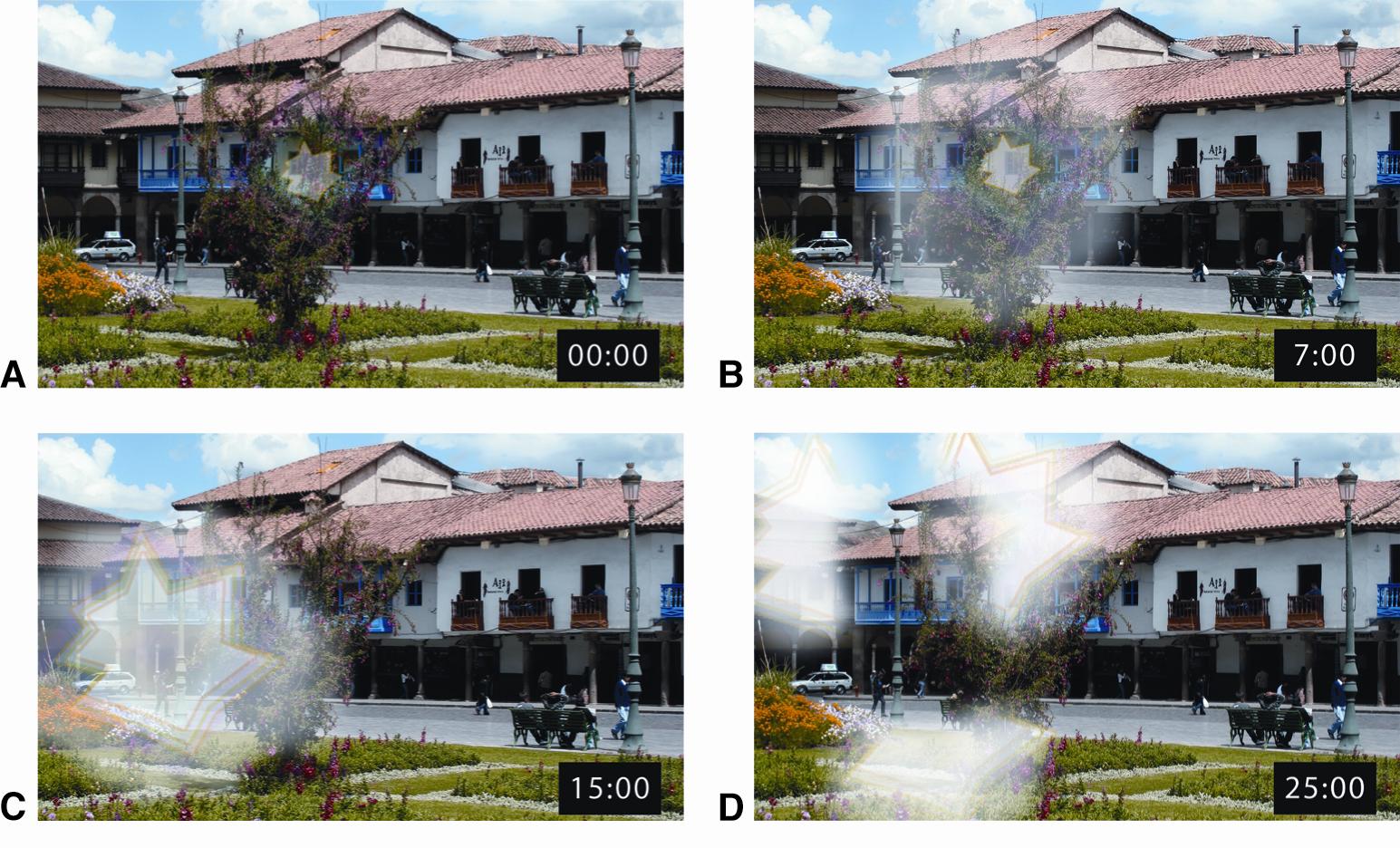Ocular Migraine
An ocular migraine is a type of migraine that affects your vision and usually lasts from approximately 10 minutes up to 1 hour. These visual disturbances can include one or a combination of vision loss, zig-zag lines, blind spots or seeing stars. It is a condition that is a result of abnormal electricity activity in the outer surface of the brain or spasms in the blood vessels in the retina and can happen with or without a headache.
If you are worried about frequent ocular migraine attacks, call (07) 3345 3383 to book a comprehensive assessment!

Image: Visual aura of migraine. A, The aura commonly begins with a small spot near the central vision (B–C) and gradually expands into the peripheral vision (D) and then breaks up. The times shown represent minutes from the onset of the visual aura.
- Can be experienced 10 to 30 minutes before a migraine starts
- Last more than 1 hour in 20% of individuals
- Occurs in 25-30% of individuals with migraines
- Less than 20% of individuals with migraine visual aura have it with every migraine attack
- Temporarily impairs vision with symptoms like
- Flashes of light
- Blind spots
- Seeing stars or patterns
Causes of ocular migraines
Triggers vary from person to person and can include:
- Bright lights
- Loud sounds
- Strong odours
- Smoking
- Changes in weather
- Stress, anxiety, relaxation after a period of stress
- Alcoholic beverages
- High-intensity exercise
- Hormonal birth control pills
- Dehydration
- Excessive caffeine intake or withdrawal from caffeine
- Foods containing nitrates, monosodium glutamate, tyramine or artificial sweeteners
Risk factors
Risk factors and causes of ocular migraine are similar to classic migraines:
- Family History. A family history of migraine or ocular migraine increases your chances of having them.
- Hormone levels. Migraines have been linked to the hormone oestrogen. This hormone fluctuates in women due to the menstruation cycle, pregnancy and menopause. It can also be affected by oral contraceptives and hormone replacement therapies.
Call us on 07 3345 3383 or book online today!
Symptoms
It can be hard to tell whether you’re having symptoms in only one eye. Symptoms such as flashing lights or blindness may only be on one side of your vision but actually feels like it is affecting both eyes. If you are unsure, you can check by covering one eye and then the other. Although the symptoms are temporary, it is still a good idea to talk to your doctor and optometrist about it.
In cases of migraines with aura, the most common symptoms are:
- Flashes of light
- Blind spots
- Seeing stars or patterns
Early detection
It can be difficult to diagnose ocular migraines as they are a very rare condition and share symptoms with other diseases. Doctors will generally go through all your symptoms to rule out conditions that cause similar symptoms such as ischemic attacks, strokes or seizures. Be ready to describe what you experience as completely as you can to help them figure out the root cause.
Reducing your risk of ocular migraines
These strategies are similar to the ones used for preventing migraines
-
- Avoid known triggers. These triggers can be the common ones listed above or any specific ones that only affect you.
- Stop smoking
- Drink plenty of water. Try to aim for 2L of water a day as being dehydrated can trigger an ocular migraine attack.
- Ensure normal blood pressure and sugar levels. Having high blood pressure or low blood sugar levels can trigger an ocular migraine attack
- Reduce screen time. Staring at a computer screen for long periods of time can trigger an attack. Aim to have a 10 minute break every 30 minutes of screen time or near-work such as working on the computer, reading and watching TV.
Treatment options
There are no clear guidelines for the treatment or management for ocular migraines. For infrequent attacks, medications can be used to relieve other symptoms. Have a talk to your doctor if you require medications for pain or nausea.
If your attacks are frequent, the doctor may recommend calcium channel blockers, antiepileptic or tricyclics medications to reduce the number of ocular migraine attacks.
During an ocular migraine attack, you can:
- Lie down or sit in a dark, quiet room
- Massage your scalp and put pressure on your temples
- Put a damp town over your forehead.
It is important that, if your vision is significantly impacted, to stop any activity that requires sharp vision. If you are driving, pull over when possible and only drive again when your vision has cleared entirely.
Living with ocular migraines
While ocular migraines generally don’t require treatment, you should talk to your doctor if you have them frequently. You should also talk to the doctor if they are increasing in severity and/or intensity. Whenever you experience drastic vision loss, vision loss in one eye, or have trouble thinking, please seek immediate medical attention.
Otherwise, you can continue with your normal daily activities but stay mindful of possible triggers for ocular migraine attacks. Additionally, during an ocular migraine attack, avoid activities such as driving to ensure your safety.